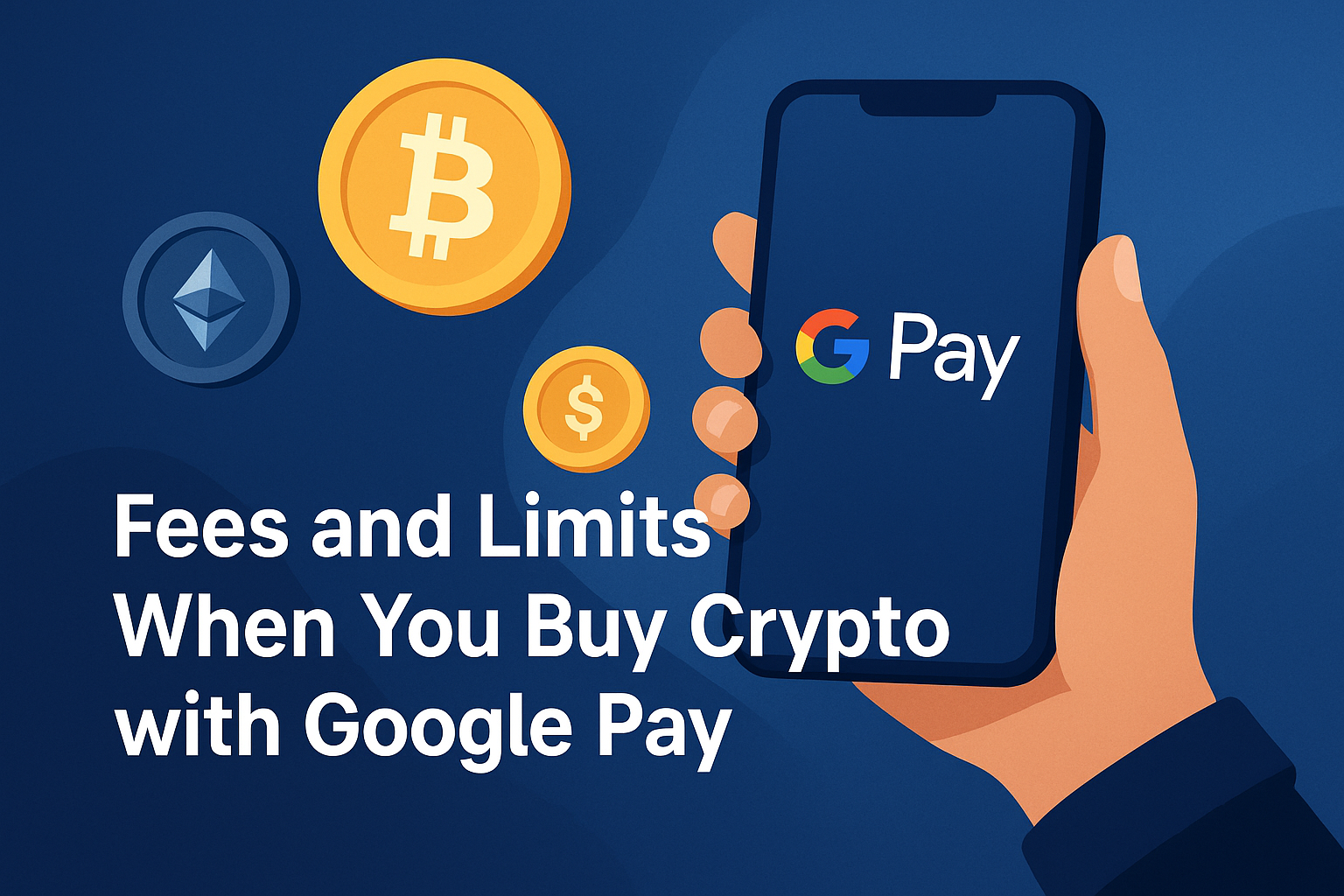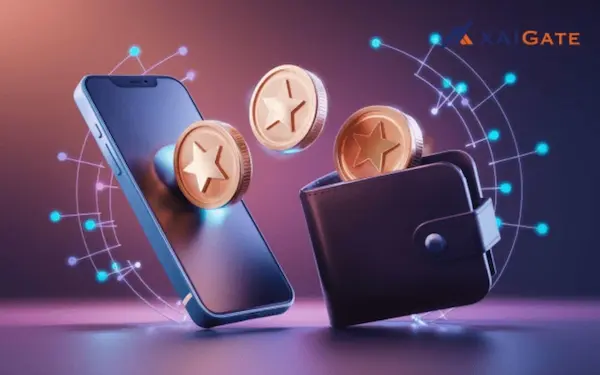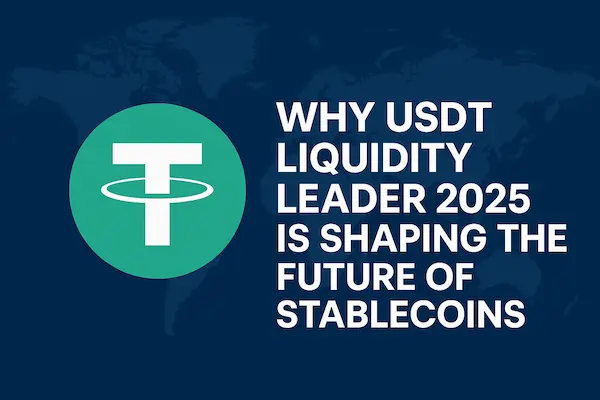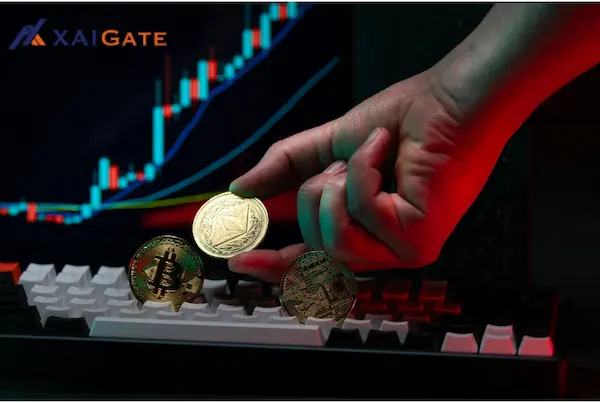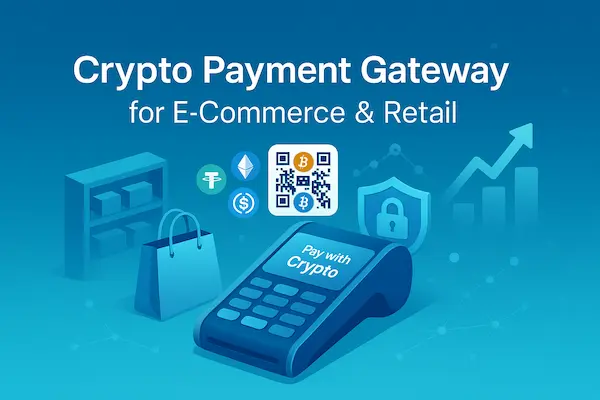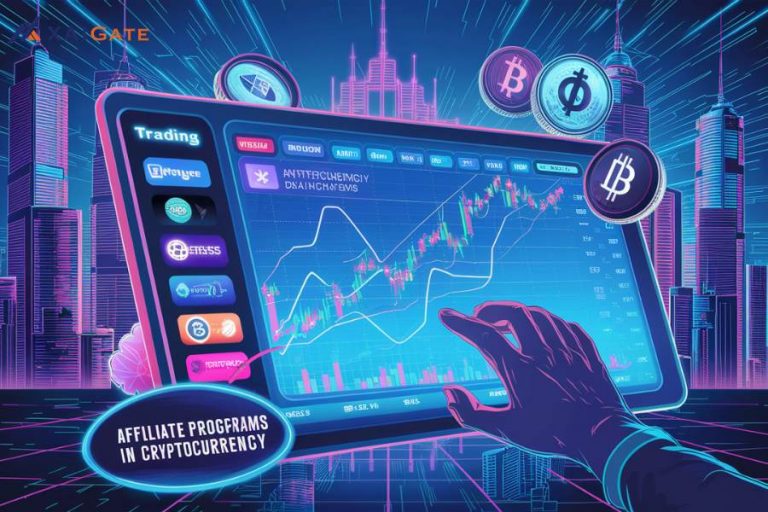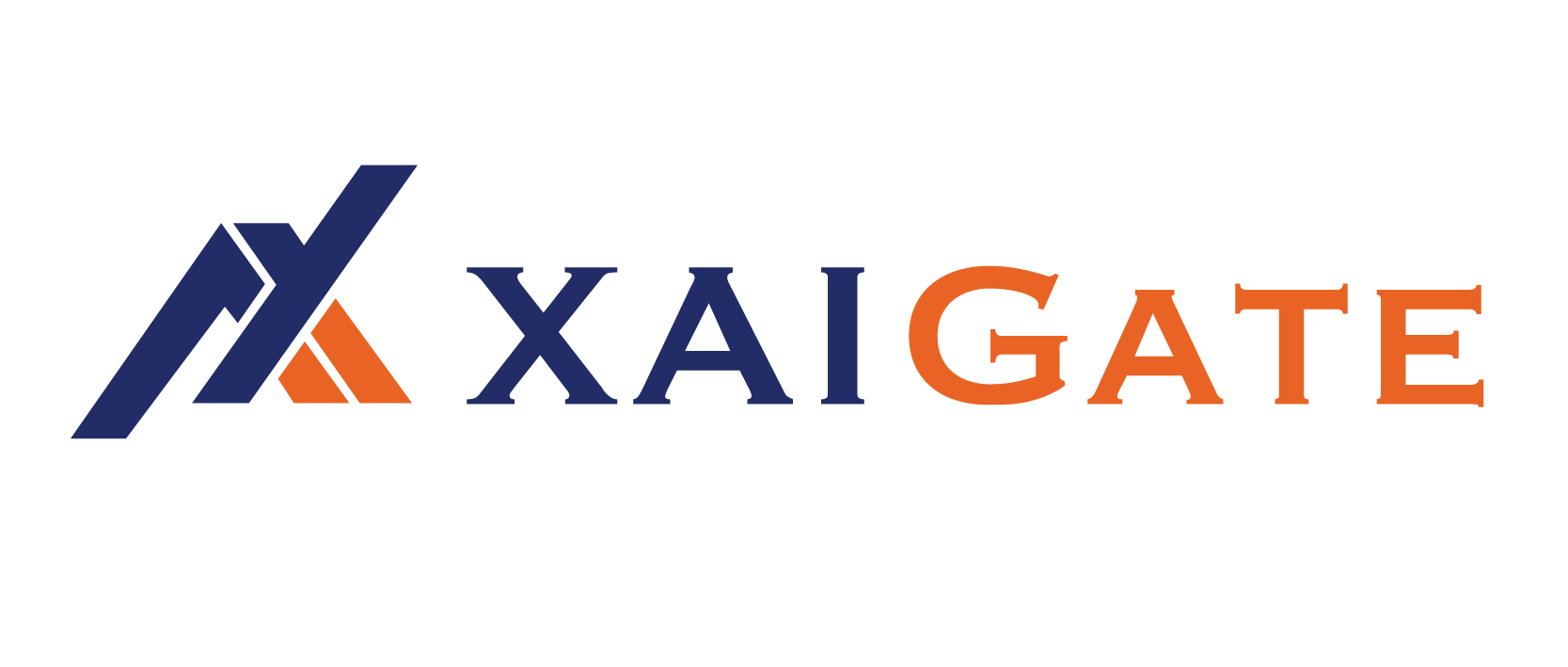When you buy crypto, you see a clean coin price on the screen but the real cost is what you pay after all fees are added. With Google Pay, that gap can be bigger than you expect, because several small charges stack on top of each other.
Most people only notice the visible trading fee and ignore spread, network costs and currency conversion. As a result, fees to buy crypto with Google Pay can quietly eat into every purchase, especially if you like to make small, frequent buys.
This guide shows you how those fees really work, which limits apply to Google Pay purchases, and what you can do in 2026 to keep your total cost under control without giving up security or compliance.
Contents
- 1 1. Key Takeaways: Fees to Buy Crypto with Google Pay at a Glance
- 2 2. How Buying Crypto with Google Pay Actually Works
- 3 3. Core Types of Fees to Buy Crypto with Google Pay
- 4 4. Limits When You Buy Crypto with Google Pay
- 5 5. Comparing Fees to Buy Crypto with Google Pay and Other Methods
- 6 6. Regional Differences in Fees and Limits
- 7 7. How to Calculate Your Real Fees to Buy Crypto with Google Pay
- 8 8. Strategies to Reduce Fees to Buy Crypto with Google Pay
- 9 9. Risk, Security and Compliance When Using Google Pay to Buy Crypto
- 10 10. 2026 Updates: How Fees to Buy Crypto with Google Pay Are Evolving
- 11 11. FAQs: Fees to Buy Crypto with Google Pay
- 12 12. Conclusion: Making Smart Decisions About Fees and Limits with Google Pay
1. Key Takeaways: Fees to Buy Crypto with Google Pay at a Glance
Before we go into detail, here is a short checklist of what really drives your cost when you use Google Pay to buy crypto.
1. Google Pay is the rail, not the main source of fees
In almost every case, Google Pay is just the way money moves from your bank or card to the exchange. The exchange or broker sets most of the trading fees and spread, so comparing fees to buy crypto with Google Pay really means comparing how different platforms price that option.
2. Your real cost is trading fee plus spread plus network and FX
The visible fee on the buy screen is only part of the story. The final cost usually includes a trading or service fee, a spread between market price and the price you get, any blockchain network fee, and sometimes a currency conversion markup.
3. Small, frequent purchases pay the highest percentage fees
Fixed minimum fees, network costs and FX charges hurt small tickets the most. If you buy tiny amounts of crypto several times a week with Google Pay, your effective percentage fee is often far higher than for fewer, larger purchases.
4. Platform choice matters more than the payment method label
Two exchanges can both support Google Pay and still have very different total costs. One may show a low trading fee but hide a wide spread, another may publish higher fees but offer a tight price close to market. You should compare total effective cost, not just the presence of Google Pay.
5. Limits are tied to KYC, bank rules and risk controls
How much you can buy with Google Pay depends on your verification level, the platform’s internal risk limits and your bank’s rules for crypto. These limits can cap or delay a purchase even when you accept the fees.
6. Cheaper is not always better if security and compliance are weak
Offers that focus only on low or zero visible fees sometimes cut corners on controls, transparency or support. Good fees to buy crypto with Google Pay balance price with clear policies, strong security, responsive support and respect for tax and reporting rules.

2. How Buying Crypto with Google Pay Actually Works
When you tap Google Pay on a crypto app, it feels like a single action. Behind that tap, there is a chain of systems: your wallet, your card or bank, the payment processor, and finally the exchange where you buy the coin. Each step is a place where cost or limits can appear, so understanding this flow is the first step to decoding the fees to buy crypto with Google Pay.
1. Who is really charging you when you use Google Pay
Google Pay is mainly a safe wrapper around your existing payment methods. It does not set the crypto price and it usually does not set the trading fee. The exchange or broker decides the trading fee, the spread, and any service charge for using Google Pay. Card networks and banks may also add their own charges in the background, such as FX markup or cash-advance type fees in some markets.
2. The typical path from fiat payment to crypto credit
In a standard flow, you choose a coin and amount, select Google Pay, confirm in your wallet, and see crypto appear in your balance. Under the hood, your card is charged in fiat, the processor sends funds to the exchange, and the exchange credits your account at a price it chooses. The timing looks instant, but the pricing logic is not always transparent, which is why two platforms can show very different fees to buy crypto with Google Pay for the same amount.
3. Why the payment rail changes price, even if you buy the same coin
Many exchanges treat bank transfers as “cheap but slow” and wallets or cards as “fast but premium”. That can mean extra markups on card and wallet transactions to cover fraud risk, chargeback exposure and processing costs. The result is that buying the same coin, at the same time, on the same platform, can be cheaper with a transfer than with Google Pay, even though both payments end up in the same trading engine.
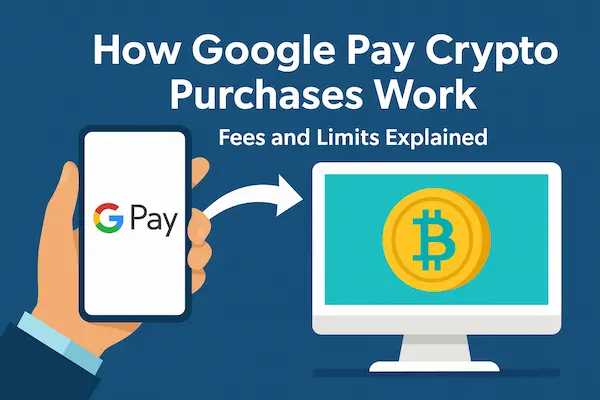
3. Core Types of Fees to Buy Crypto with Google Pay
Most apps show a single line called “fee”, but your real cost is like a layered cake. Trading fee, spread, network costs and currency conversion all sit in that stack. If you want to control fees to buy crypto with Google Pay, you need to recognise each layer and how it behaves.
1. Trading and service fees
This is the visible fee: a fixed amount, a percentage, or a maker/taker fee on the trade. Some platforms raise this slightly for Google Pay purchases to cover higher processing costs. Others keep it the same but change the price using spread, so a “low fee” badge does not always mean a cheap trade.
2. Spread between market price and what you pay
Spread is the difference between the true market price of a coin and the price you see as a buyer. If Bitcoin trades at 40,000 but your app sells it to you at 40,600, that 600 gap is effectively part of your fees to buy crypto with Google Pay, even if no one labels it “fee”. Many zero-fee offers quietly move most of the monetisation into spread.
3. Network and blockchain fees
If your purchase is kept inside the exchange, you may not see network fees immediately. When you withdraw or move coins on chain, you pay blockchain network costs, which can be low or very high depending on the asset and network congestion. From a total cost point of view, these on-chain fees are part of what it really costs you to buy, hold and move crypto purchased with Google Pay.
4. FX and currency conversion costs
If your card or bank account is in one currency and the platform prices trades in another, you may pay FX conversion on top. This can be a bank FX fee, a card network markup, or a margin inside the payment processor. Many buyers only notice this when they see a charge in their statement that is higher than the amount they expected to pay.

4. Limits When You Buy Crypto with Google Pay
Fees tell you how much you lose on each purchase; limits tell you how far you can go before someone says “stop”. Both are part of planning a realistic strategy for using Google Pay to build a crypto position.
1. Platform-level daily, weekly and monthly caps
Every regulated platform has internal limits to manage risk and compliance. These may cap the amount you can buy per transaction, per day or per month when you use Google Pay. Sometimes limits are lower for wallet and card purchases than for bank transfers, because refunds and chargebacks are easier on card rails.
2. How KYC and verification tiers affect limits and fees
Most exchanges tie higher limits to stronger identity checks. A basic account might only allow a small daily volume with Google Pay, while a fully verified account can purchase much larger amounts. In some cases, moving up a tier can also improve pricing, so advanced users end up with lower effective fees to buy crypto with Google Pay than new users making tiny test trades.
3. Limits from banks, card networks and Google itself
Your bank or card issuer can also restrict crypto purchases, even if the exchange is willing to accept them. Some banks classify crypto as high risk and set low transaction caps or block certain merchant categories. Card networks and Google’s own fraud systems may flag unusual patterns, which can temporarily stop Google Pay from working for crypto until you clear security checks.
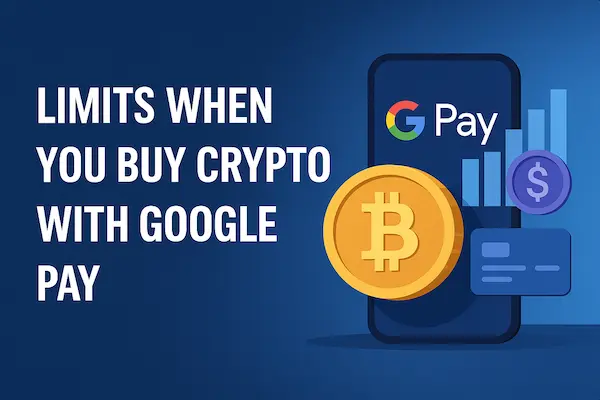
5. Comparing Fees to Buy Crypto with Google Pay and Other Methods
Google Pay is built for convenience, not for being the absolute cheapest payment rail in every situation. To judge whether it makes sense for you, you need to compare total cost across methods, not just look at one fee field.
1. Google Pay versus bank transfers
Bank transfers are often cheaper but slower. Many platforms offer low trading fees and tight spreads for bank deposits because the risk of chargeback is low. With Google Pay, you are effectively using a card behind the scenes, so the platform often adds a premium. If you buy large amounts and can tolerate slower settlement, a transfer may reduce your effective fees to buy crypto with Google Pay by avoiding wallet or card surcharges.
2. Google Pay versus direct card payments
In many cases, Google Pay and direct card behave similarly, because both run on the same underlying card networks. The advantages of Google Pay are tokenisation, ease of use and not having to type card numbers each time. The pricing difference, if any, depends on how the platform has negotiated rates with processors; sometimes Google Pay is treated the same as a normal card, sometimes not.
3. Google Pay versus other digital wallets
Other wallets, such as Apple Pay or local e-wallets, may have their own fee structures. Some markets offer instant bank-to-wallet rails that are cheaper than card-based Google Pay. The key is always to compare the total crypto received for a fixed amount of fiat across payment options. If Google Pay consistently delivers less crypto for the same spend, your fees to buy crypto with Google Pay are effectively higher, even if advertised fees look similar.
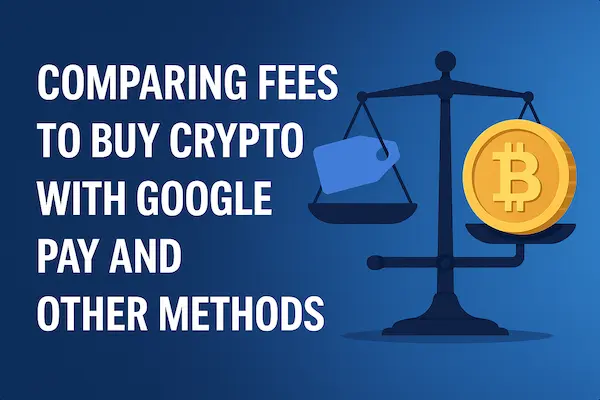
6. Regional Differences in Fees and Limits
The world of payments and crypto is shaped by local law, banking culture and tax rules. The same app can feel cheap and frictionless in one country and expensive or restricted in another.
1. Regulation and access to Google Pay for crypto
Some regulators welcome retail access to crypto but demand strong disclosure and reporting; others restrict card and wallet funding or ban certain services altogether. When a market is tightly regulated or treated as high risk by banks, platforms may charge more to cover the added overhead, which directly affects fees to buy crypto with Google Pay in that region.
2. Banking rules and card network policies
Banks and card networks can decide which merchants they treat as crypto and what risk category applies. In some countries, card networks charge higher interchange or require extra monitoring for crypto merchants. Those costs are usually passed on in trading fees or spread, so buyers in stricter markets may pay more for the same Google Pay transaction than buyers elsewhere.
3. Local tax and reporting obligations
Tax does not show up as a fee on the trade screen, but it is part of the real cost. In many jurisdictions, buying, selling and holding crypto creates reporting duties or taxable events. If you are making frequent small purchases with Google Pay without tracking them properly, the administrative overhead down the line can become a hidden cost of your strategy.
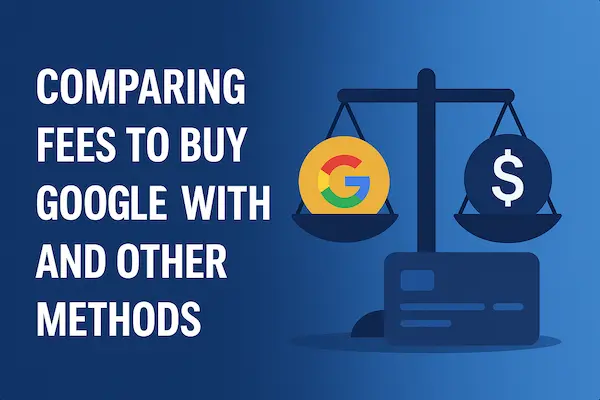
7. How to Calculate Your Real Fees to Buy Crypto with Google Pay
It is easy to feel lost in percentages and fine print. This simple method turns everything into one clear number: how much you really paid to get a certain amount of crypto when you use Google Pay.
1. A simple step-by-step method
Pick a single purchase and note four numbers:
- The fiat amount charged to your card or bank via Google Pay
- The amount of crypto you actually received
- The true market price of that crypto at the time (from an independent source)
- Any extra on-chain or withdrawal fees you paid
Compare how much crypto you should have received at market price with what you actually got. The difference, expressed as a percentage of your fiat spend, is your real effective fees to buy crypto with Google Pay.
2. Example for a small purchase
If you pay 100 in fiat and receive crypto worth 96 at market price, the 4 gap is your total cost: trading fee, spread, FX and any small on-chain cost. Your effective fee is 4 percent, even if the platform only shows a 1 percent “official” fee.
3. Example for a larger purchase
If you pay 1,000 and receive crypto worth 970 at market prices, your total cost is 30, or 3 percent. The same fixed network fee and processing overhead are now spread over a larger ticket, so your effective fees to buy crypto with Google Pay are lower than on the small transaction.
8. Strategies to Reduce Fees to Buy Crypto with Google Pay
You may prefer Google Pay for convenience, device security or cash-flow reasons. Even so, you can usually push your total cost down without abandoning the payment method altogether.
1. Choose platforms with transparent, low-spread pricing
Look for exchanges that show both the trading fee and a live, tight price close to an external market index. If an app advertises zero or ultra-low fees but always quotes a noticeably worse price, your fees to buy crypto with Google Pay are hiding in the spread. Transparent providers may look slightly more expensive on the fee line, but cheaper on the final amount of crypto you receive.
2. Optimise your transaction size and frequency
If you are currently buying very small amounts many times a week, consider consolidating into fewer, slightly larger purchases. This allows fixed costs such as network fees to be spread over more value, lowering your effective percentage fee. You can still keep a disciplined schedule using recurring buys, just with more efficient ticket sizes.
3. Pick networks and assets with sensible on-chain costs
If you plan to move your crypto off the exchange, look at the typical network fees for each asset and chain. In some cases, buying on a lower-fee network or using a stablecoin on a cheap chain can reduce your total cost compared with buying the same asset on a congested mainnet where gas prices are high.
4. Avoid unnecessary currency conversion
Whenever possible, fund your Google Pay wallet with a card or account in the same currency used by your exchange. This reduces extra FX spreads and international processing fees, which are often invisible in the interface but very real in your statement and in your true fees to buy crypto with Google Pay.
9. Risk, Security and Compliance When Using Google Pay to Buy Crypto
Chasing the lowest cost is natural, but it should not come at the expense of safety. A small saving is not worth fraud, frozen funds or tax trouble when you buy crypto with Google Pay.
1. Beware of “zero fee” offers with no track record
Some lightly regulated platforms push “zero fee” Google Pay buys to attract users. If there is no clear company identity, no licensing information and no meaningful reviews, the risk of losing funds or facing frozen withdrawals is high. A small, fair fee with a reputable provider is almost always safer than a free headline with unclear backing.
2. Understand chargebacks and account freezes
Card-based payments have strong consumer protections, which is good for buyers but risky for exchanges. To manage chargeback risk, some platforms using Google Pay monitor patterns and may freeze or review accounts after disputes or unusual activity. Using your own payment methods and keeping records reduces the chance that fraud checks disrupt your access.
3. Respect KYC, AML and tax rules
If a platform seems uninterested in who you are or where your money comes from, that is a red flag. Serious providers must follow know-your-customer and anti-money-laundering rules, and you may also have tax reporting duties. Cooperating with these requirements is part of building a compliant setup where your right to use Google Pay and hold crypto is more likely to be respected over time.
10. 2026 Updates: How Fees to Buy Crypto with Google Pay Are Evolving
The landscape is not static. Competition between exchanges, new payment rails and evolving rules all change how fees to buy crypto with Google Pay behave over time.
Some platforms are shifting away from high, fixed trading fees and toward dynamic pricing that adjusts with market liquidity. Others are integrating cheaper instant-payment networks behind the scenes, which may slowly narrow the gap between wallet-based payments and bank transfers. On the regulatory side, tighter scrutiny of retail crypto advertising is pushing serious providers to be clearer about their fee structures, while weaker actors are starting to disappear.
For you as a user, the takeaway is simple: what was the cheapest approach in 2023 or 2024 may not be the cheapest in 2026. Reviewing your main platforms once or twice a year and recalculating your effective fees to buy crypto with Google Pay keeps your strategy current instead of relying on old assumptions.
11. FAQs: Fees to Buy Crypto with Google Pay
Short, direct answers help clear up common misunderstandings and are also easy for search engines and AI tools to surface.
1. What are the main fees to buy crypto with Google Pay?
You usually pay a trading or service fee, plus a spread between the live market price and the price you receive. On top of that there can be blockchain network fees and currency conversion costs if your card and the exchange use different currencies.
2. Does Google Pay itself charge a fee when I buy crypto?
In most cases Google Pay is just the payment wallet and does not add a separate retail fee. The fees to buy crypto with Google Pay come mainly from the exchange, the payment processor and your bank or card issuer.
3. Why do fees to buy crypto with Google Pay change from platform to platform?
Each platform has its own pricing model, risk rules and deals with processors. Some keep trading fees low but use a wide spread, others are more transparent and charge a clearer fee while keeping prices close to market.
4. Is buying crypto with Google Pay more expensive than using a bank transfer?
Often bank transfers are cheaper for larger amounts because they are lower risk for the exchange. Google Pay is usually more convenient and faster, but total fees to buy crypto with Google Pay can be slightly higher, especially for frequent small purchases.
5. How can I reduce my total fees to buy crypto with Google Pay?
Compare how much crypto you receive for the same fiat amount on different platforms, not just the fee line. Buying less often in slightly larger amounts, avoiding extra FX conversion and choosing assets on cheaper networks can all lower your effective cost.
6. Do small Google Pay purchases have higher percentage fees?
Yes, fixed components like network fees and processor minimums hit small tickets harder. If you buy 20 or 30 units of fiat at a time, those fixed charges can turn into very high percentage fees to buy crypto with Google Pay.
7. Do I still pay network fees if I keep my crypto on the exchange?
You will not see on-chain fees until you withdraw or move coins off the platform. However, it is smart to treat future withdrawal costs as part of your overall cost strategy when you decide how often and how much to buy with Google Pay.
8. How often should I review the fees I pay when using Google Pay for crypto?
At least once or twice a year you should check your main platform and recalculate your real effective fee. Markets, fee tables and spreads change, so a provider that once had low fees to buy crypto with Google Pay might not stay competitive forever.
12. Conclusion: Making Smart Decisions About Fees and Limits with Google Pay
Buying crypto with Google Pay can be a smooth, familiar experience, but comfort should not blind you to cost. Once you look beyond the simple fee label and calculate your true effective fees to buy crypto with Google Pay, you may find big differences between platforms, ticket sizes and payment setups.
The most sustainable approach is to balance convenience, price and safety. Use providers that are open about how they earn their money, keep good records, and recheck your total cost a few times a year. When you understand how fees and limits really work, Google Pay becomes another useful tool in your payment toolkit, not a hidden drain on every crypto purchase you make.
For daily updates, subscribe to XAIGATE’s blog!
We may also be found on GitHub, and X (@mxaigate)!

